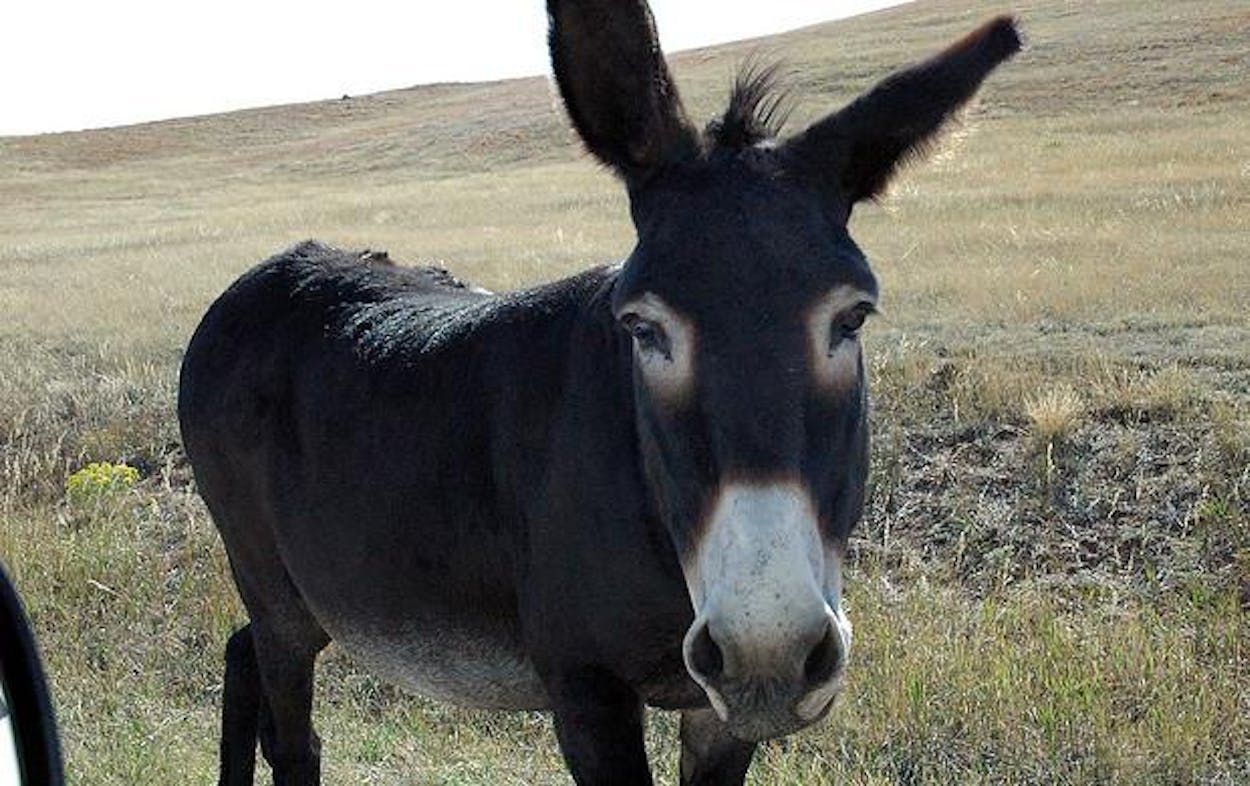The horse is a revered symbol in Texas. However, their less-loved mule and burro kin have had a rough time in the Lone Star State in the past few years. As if being shot weren’t bad enough, now their worries include being turned into giant Teddy bears.
A museum in Lubbock has sparked a minor controversy among animal rights activists after euthanizing and stuffing two mules for a museum display.
The American Museum of Agriculture acquired the 28- and 32-year-old mules after an unsuccessful search for “preserved, exhibit-quality animals,” according to a statement (PDF) the museum board members released September 17. The statement claims that the pair of old mules, which were “no longer sound or strong enough for normal use,” were purchased from a local horse and mule trader who would have otherwise sold the animals for slaughter in Mexico.
Ramona Foxworth, founder of the Gypsy Heart Horse Rescue in Lubbock, told a reporter from KCBD-TV that she attempted to dissuade the museum from putting the animals down only to discover that they had already been euthanized by a local veterinarian.
“I just believe with all my heart this is the wrong thing to do. I think it’s absolutely abhorrent, and disgusting and so archaic. I’m horrified by it,” she said. “They could have lived out the end of their days under an apple tree which is probably what they deserved anyway.”
Foxworth is not the only Texan who has been moved to take action by the stuffing scandal.
San Antonio resident Patrick Greene filed a lawsuit against the president of the museum’s board of directors, Dan Taylor, for not notifying the public about the museum’s intention to use real animals in their display. In his suit, Greene maintains that Taylor had an obligation under state law to announce his plans to the public, the Lubbock Avalanche-Journal reported
The museum said they considered alternatives but ultimately decided to use real animals upon advice from Museum Arts, a Dallas-based museum exhibit planning, concept, design and fabrication firm.
“Museum Arts strongly recommended that we obtain professionally preserved mules in full harness to allow our visitors to understand how essential animal power was to this stage of American agriculture,” a press release from the museum said. “Our board did consider the use of fiberglass replicas but were advised that the impact of the exhibit would be substantially diminished.”
Greene believes the museum’s actions are not justified by their educational intentions.
“They did it for the worst reason of all, for a display in the museum,” Green told Lubbock’s Fox 34 News. “That is an incredibly horrible reason to do it. So people can look and stare and gawk?”
Greene’s suit is not seeking monetary damages, but asks that the mules’ bodies be turned over to an animal sanctuary for cremation and disposal, according to the Express-News.
An exchange between readers on the Avalanche-Journal‘s comment board reveals how some Texans are split about the issue.
User DBeal659 condemned the museum’s actions: “These mules should have been handed over to Ramona and granted sanctuary. These mules did not have to be slaughtered for the museum’s amusement.”
But another commenter, 75nothing, who claims to have raised horses for 30 years, noted that it can cost an exorbitant amount to keep elderly horses and mules, which are routinely euthanized. “I would be honored to have one of my horses immortalized in a museum for people and children to learn from,” they wrote.






